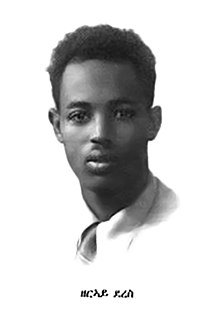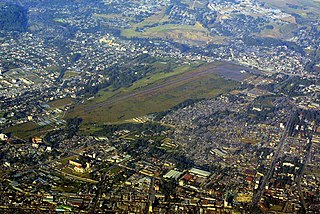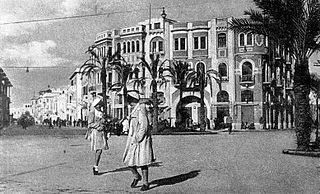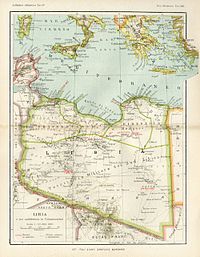Development
Ala Littoria's service to East Africa was inaugurated in 1935 under the name Linea dell'Impero. On 7 July 1935 a memorandum of agreement was signed with Imperial Airways, a private British firm, whereby they would carry Ala Littoria passengers from Brindisi in southern Italy as far as Khartoum in the Sudan (via Cairo in Egypt). This was the first leg of Imperial Airways' route from Europe to South Africa. From Khartoum, Ala Littoria's passengers would transfer to its own aircraft and fly on to Kassala (Sudan), Asmara (Eritrea), Massawa (Eritrea), Djibouti (French Somaliland), Berbera (British Somaliland), Bura Galadi (British Kenya) and Mogadishu (Italian Somaliland). Full passenger service from Rome to Mogadishu opened in November 1935. [1] By March 1937, service had been added to Gorrahei (Ethiopia) and Beledweyne (Somalia). [2]
The Imperial Line was not a quick route. From Rome to Massawa took three days. Ala Littoria's chief executive, Umberto Klinger, claimed optimistically to Il Messaggero in 1936 that the route from Rome to Mogadishu took just three and a half days. Following the Italian conquest of Ethiopia, Addis Abeba was added to the route. The opening of the route from Rome to Addis Abeba via Cairo was delayed by the negotiations with the Egyptian government concerning flyover rights. The first two flights from Cairo to Addis Abeba even flew without permits. [3]
By October 1937, there were four weekly flights leaving Rome for Asmara and Addis Abeba, while Asmara had two weekly to Djibouti and another two weekly to Mogadishu (both via Assab and Dire Dawa). [1] The timetable for the Imperial Line was less precise owing the longer flight times. Departures were usually scheduled for 10:15 a.m. at Rome, but arrivals were only given as dawn, morning or afternoon. [3]
Airports and aircraft
Airstrips in Italy's African colonies were mostly hot and high and the Imperial Line was more dangerous than European routes. The greater distance between airstrips in East Africa also contributed to a higher fatality rate on Imperial Line flights, with 40% of accidents resulting in deaths as opposed to 20% on European flights. [1]
Besides land-based aircraft, the Imperial Line operated seaplanes for use on coastal routes and operating out of lakes and rivers. [1] By 1938, the trip from Rome direct to Benghazi was accomplished by a Cant Z.506 seaplane, while the leg from Benghazi to Addis Abeba by a Savoia-Marchetti S.73. Both were trimotors. [4] All the machines that flew the Imperial Line used foreign-built engines save for one S.73 that had an Alfa Pegaso and one Fokker F.VII trimotor that flew within East Africa and was equipped with an Alfa D.2. [3]
Along the Imperial Line, there were maintenance bases at Rome, Brindisi, Benghazi and Asmara. [5]

Italian East Africa was an Italian colony in the Horn of Africa. It was formed in 1936 through the merger of Italian Somalia, Italian Eritrea, and the newly occupied Ethiopian Empire, conquered in the Second Italo-Ethiopian War.
The Milizia Coloniale was an all-volunteer colonial militia composed of members of the Fascist Milizia Volontaria per la Sicurezza Nazionale or MVSN, commonly called the "Blackshirts". It is considered unique in modern Italian military history, with its reputation matched only by the pre-unification paramilitary forces Redshirts.

Asmara International Airport, IATA: ASM, ICAO: HHAS, is the international airport of Asmara, the capital of Eritrea. It is the country's largest airport and, as of 2017, the only one receiving regularly scheduled services.

Ala Littoria S.A. was the Italian national airline that operated during the fascist regime in the 1930s and 1940s.

Aden Adde International Airport, formerly known as Mogadishu International Airport, is an international airport serving Mogadishu, the capital of Somalia. It is named after Aden Abdullah Osman Daar, the first President of Somalia.

Wadi Halfa Airport is an airport serving Wadi Halfa in Sudan. The airport is approximately 14 kilometres (8.7 mi) east of Wadi Halfa.

The Italian guerrilla war in Ethiopia was a conflict fought from the summer of 1941 to the autumn of 1943 by remnants of Italian troops in Ethiopia and Somalia, in a short-lived attempt to re-establish Italian East Africa. The guerrilla campaign was fought following the Italian defeat during the East African Campaign of World War II, while the war was still raging in Northern Africa and Europe.

Castel Benito was an airport of Tripoli created by the Italians in Italian Libya. Originally, it was a small military airport, but it was enlarged in the late 1930s and was later used by the British RAF after 1943. It was called RAF Castel Benito by the Allies.

Castel Benito was an airport of Tripoli created by the Italians in Italian Libya in the early 1930s. It was called RAF Castel Benito by the Allies after 1943.

Railway transport in Somalia consisted of the erstwhile Mogadishu–Villabruzzi Railway and secondary tracks. The system was built during the 1910s by the authorities in Italian Somaliland. Its track gauge was 950 mm, a gauge favoured by the Italians in their colonies in the Horn of Africa and North Africa. The railway was dismantled in the 1940s by the British during their military occupation of Italian Somaliland, and was subsequently never rehabilitated.

Zerai Deres was an Eritrean translator and patriot. In 1938, he engaged in an act of public devotion to an important symbol of his native country, the Monument to the Lion of Judah, at the time kept in Rome. When interrupted, he violently protested against Italian colonialism while brandishing a scimitar, which led to his arrest and internment in a psychiatric hospital for seven years, until his death. However, contemporary Italian historians doubt the claim that he was mentally unstable. Zerai's protest, lionized after the end of the Second World War, is considered by Eritrean and Ethiopian historiography as part of the movement against Italian occupation. To this day, Zerai is considered a legend and a folk hero of anticolonialism and antifascism both in Eritrea and Ethiopia.

Italian Eritrea was a colony of the Kingdom of Italy in the territory of present-day Eritrea. The first Italian establishment in the area was the purchase of Assab by the Rubattino Shipping Company in 1869, which came under government control in 1882. Occupation of Massawa in 1885 and the subsequent expansion of territory would gradually engulf the region and in 1889 borders with the Ethiopian Empire were defined in the Treaty of Wuchale. In 1890 the Colony of Eritrea was officially founded.

Amhara Governorate was one of the six governorates of Italian East Africa. Its capital was Gondar. It was formed in 1936 from parts of the conquered Ethiopian Empire following the Second Italo-Ethiopian War. It had a population of more than 2 million inhabitants. In November 1938 some territory of Amhara in the Scioa region was given to the neighboring Addis Abeba Governorate, enlarging it to the Scioa Governorate.

Italians of Ethiopia are immigrants who moved from Italy to Ethiopia starting in the 19th century, as well as their descendants. King Menelik II did not allow the sale of lands belonging to Ethiopia to Italians (Eritrea) and probably allowed France (Djibouti) to solidify his centralized power and have external trading partners. Most of the Italians moved to Ethiopia after the Italian conquest of Abyssinia in 1936. Italian Ethiopia was made of Harrar, Galla-Sidamo, Amhara and Scioa Governorates in summer 1936 and became a part of the Italian colony Italian East Africa, with capital Addis Ababa. and with Victor Emmanuel III proclaiming himself Emperor of Ethiopia.

Italian Ethiopia, also known as the Italian Empire of Ethiopia, was the territory of the Ethiopian Empire which was occupied by Italy for approximately five years. Italian Ethiopia was not an administrative entity, but the formal name of the former territory of the Ethiopian Empire which now constituted the Governorates of Amhara, Harar, Galla-Sidamo, and Scioa after the establishment of Italian East Africa.

Lideta Airport also colloquially known as the Old Airport is a decommissioned military airport located in Addis Ababa, Ethiopia.

The Railway Stations in Somaliland were served by the Mogadishu–Villabruzzi Railway of 114 km.

Italian Benghazi was the name used during the Italian colonization of Libya for the port-city of Benghazi in Italian Cyrenaica.

The Italian colonial railways started with the opening in 1888 of a short section of line in Italian Eritrea, and ended in 1943 with the loss of Italian Libya after the Allied offensive in North Africa and the destruction of the railways around Italian Tripoli. The colonial railways of the Kingdom of Italy reached 1,561 kilometres (970 mi) before WWII.

The Petrella Airport was the first international airport in Italian Somalia. It was opened in 1928 -just 3 miles south of Mogadishu- with the name "Enrico Petrella" in honor of an Italian pilot who died a few years before in the same airport of Italian Mogadiscio. In 1941 the airport was partially destroyed during WW2 and remained inactive for some years as a civilian airport: only military airplanes used it. In 1950 was reopened as a civilian airport by the Italian authorities of the ONU Fiduciary Mandate.




















